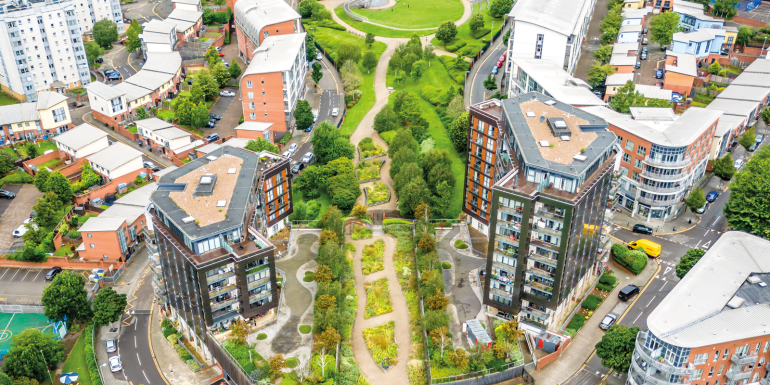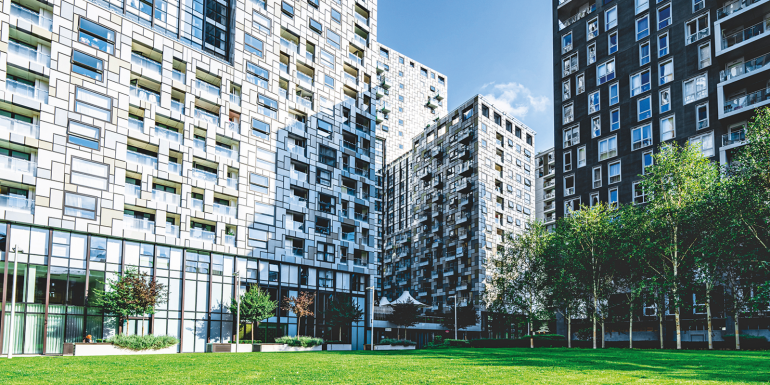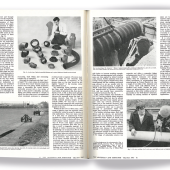The density dilemma

The Council on Tall Buildings and Urban Habitat (CTBUH) addresses burgeoning urban density, a multifaceted global issue that requires innovative approaches in architecture, urban planning and public policy.
What is the density dilemma? As populations swell in cities worldwide – the UN projects that nearly 70% of the world’s population will live in urban areas by 2050 – there is a growing need to actively confront the challenges of accommodating more people without compromising the environment, equitable and healthy living and professional, civic and social engagement.
“Density can be perceived in various ways,” says CTBUH CEO Javier Quintana de Uña. “For some, it conjures challenges associated with big cities and insufficient infrastructure. For others, it represents smarter tall buildings, efficient land use, vibrant urban environments and the potential for sustainable living. We believe in the latter perception, which can meaningfully influence urban policies and development strategies – that’s why it’s essential to clarify what balanced, effective and liveable density looks like.”
High-density urban areas offer several benefits. They can reduce the per capita cost of infrastructure and public services and support a diverse array of cultural and economic activities. Dense urban environments can also encourage public transportation use, reduce car dependency and lower greenhouse gas emissions, contributing to the fight against climate change. However, these benefits are only realised when density is managed effectively, which requires imaginative solutions tailored to diverse urban contexts.
Old vs new
One critical aspect of the density dilemma is the revitalisation of existing structures and urban areas. Adaptive reuse of old buildings and infrastructure can preserve cultural heritage while meeting modern needs – an approach that can be more sustainable than new construction by reducing the environmental impact associated with demolition and building materials.
Gwyn Richards, Planning and Development Director at the City of London Corporation, notes: “Repurposing and retrofitting existing buildings is a key part of creating a pathway to sustainable urban regeneration. The theme of this year’s CTBUH conference – New or Renew – resonated deeply with our work in the City of London, where we advocate a ‘retrofit first not retrofit only’ approach and strive to balance heritage and modernity while creating vibrant, resilient and inclusive buildings and spaces for future generations.”
81% of all buildings built in London before 2000 have not been renewed in any fashion in the 21st century; the rest have been repurposed or demolished. Of the non-renewed buildings, 32% are now of the age where they could be candidates for a functional conversion or other such overhaul in lieu of demolition.
In its blog New or Renew, CTBUH notes that more than 1,000 buildings of at least 75 metres have been completed in Europe’s ten tallest cities since 1900. Of those, 54 have been renewed post-completion and 34 have been demolished. Demolished tall buildings in these cities are, on average, 56.6 years old, which is much higher than the global average of 41.2 years. Renewed tall buildings in the same cities are, on average, 49.4 years old, with the average renewal (retrofit, renovation or recladding) occurring 41.3 years post-completion. The need for more housing is the reason why these tall buildings exist, but with that comes the responsibility to maintain or improve residents’ quality of life.

Quality of life
Poorly planned cities can lead to overcrowding, strained infrastructure and diminished public spaces. “Addressing the density dilemma is about crafting communities,” says William Chilton, Principal at Pickard Chilton Architects.
“We must ensure that high-density developments foster liveable, people-oriented communities that offer a high quality of life. Thoughtful urban and architectural design must turn the challenges of dense environments into opportunities for placemaking innovation. By embracing context, scale and purpose, we can create spaces that enhance the liveability and connectivity of our cities.”
Sustainability is fundamental to the density dilemma. New or refurbished, high-density developments must incorporate green building practices, non-polluting technologies and renewable energy sources to minimise their environmental footprint. Urban green spaces – such as parks and vegetated roofs – can mitigate the heat island effect, improve air quality and provide residents with areas for recreation and relaxation.
Paris La Défense is a local public body responsible for development, operations and promotion of the district. It works to develop and modernise the area by implementing urban planning projects and has committed to halving its greenhouse gas emissions by 2030. “Paris La Défense exemplifies sustainability through its inventive urban planning and architecture,” says Pierre-Yves Guice, CEO of Paris La Défense. “The district integrates eco-friendly technologies and initiatives, such as green roofs, energy-efficient buildings and extensive public transport networks, to minimise its carbon footprint and provide a model for balancing urban density with environmental responsibility.”
Associate Director at Atelier Ten Gita Maruthayanar agrees, noting that that smart connectivity can support sustainability initiatives. She says: “When confronting the ‘density dilemma’, we must not overlook how technological advancements are shaping the future. Innovations such as smart buildings that utilise data-driven design and automated services, modular construction methods and creative ways to lock in existing embodied carbon by reusing the structure are helping the industry reduce its carbon footprint.
“To accelerate the drive to net zero in dense urban environments, we need to minimise the need for new buildings and assess how existing buildings can be modified to be more sustainable, habitable and affordable.”
So, it becomes clear why innovative approaches to urban planning and construction are required for so many people to live so closely together without their quality of life diminishing – but what those approaches are, is not quite so clear.
CTBUH has issued a call to action for all stakeholders in urban development to consider just this. How can urban density and specifically tall buildings meet the needs of a growing population while being sustainable, equitable and resilient places to live? Catherine Skinner, Principal at BVN, says: “Considering our cities as interconnected communities creates space for diversity, wonder and delight; places where continuous adaptation at both the individual and city scale is possible.”
CTBUH is a global nonprofit organisation dedicated to smarter, more sustainable cities and a more viable future for global populations. It specifically focuses on the critical role of density in addressing climate change. For more information and to view its building database – a compendium of detailed data, images and technical information on more than 40,000 tall buildings throughout the world – visit ctbuh.org
In response to the global challenges of rapid urbanisation, CTBUH has launched the City Advocacy Forum, a new initiative dedicated to advancing sustainable, resilient and inclusive high-density urbanism – see b.link/CTBUH_CAF
Image credit | iStock




